1 Chalkboard
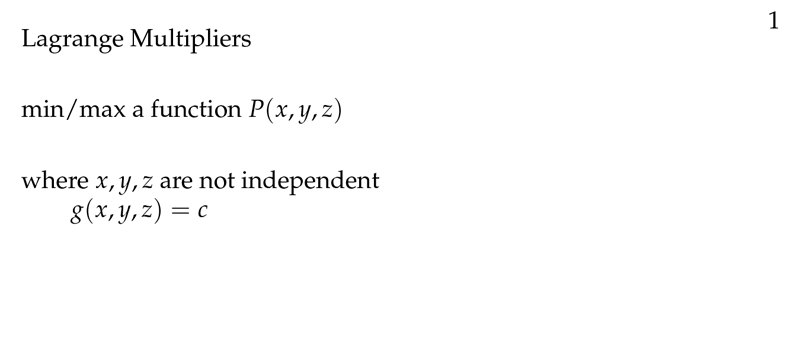
Figure 1: Lagrange multipliers
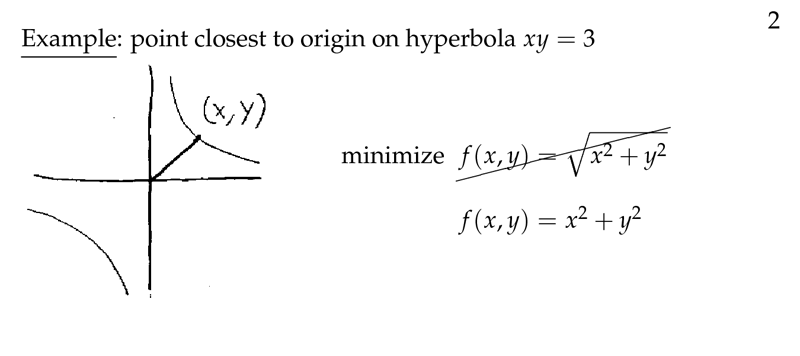
Figure 2: Example of using lagrange multipliers
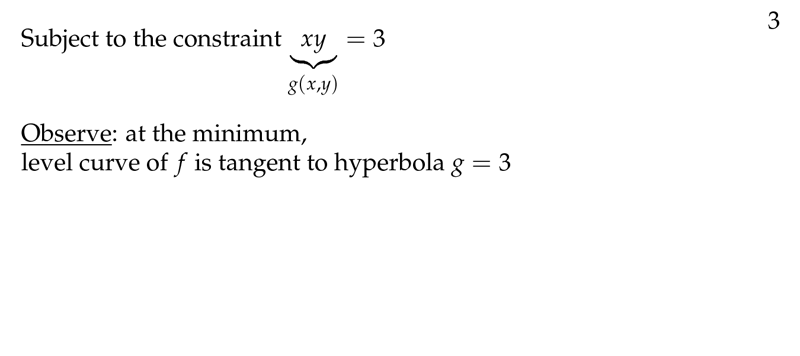
Figure 3: Subject to the constraint
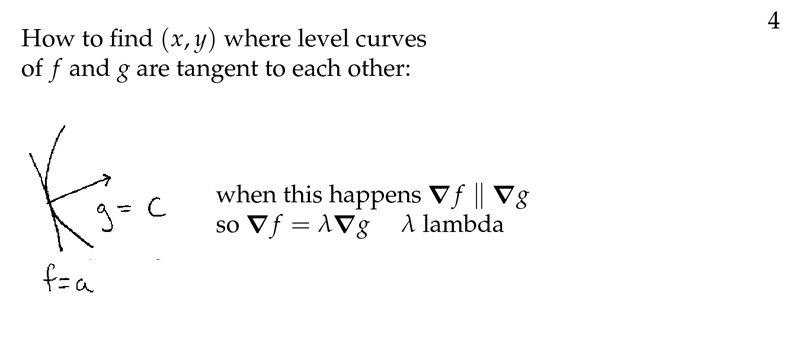
Figure 4: Both gradient vectors are parallel at level curves
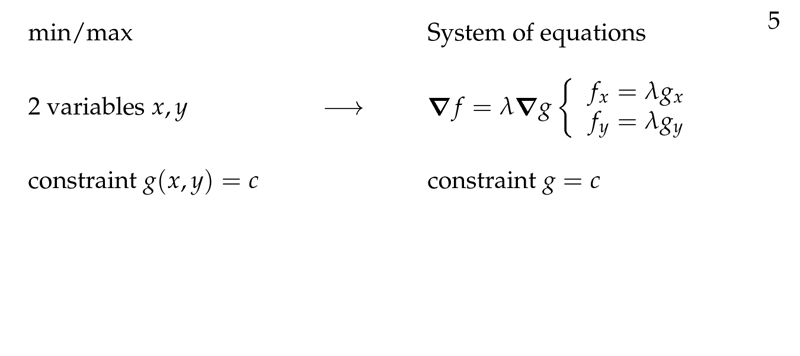
Figure 5: System of equations
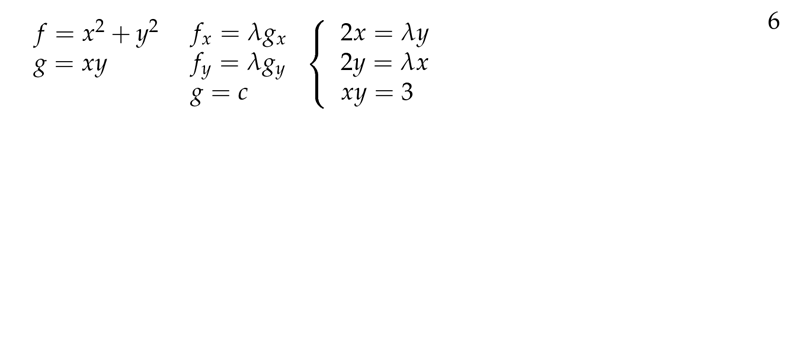
Figure 6: 2 gradiant vector and constraint
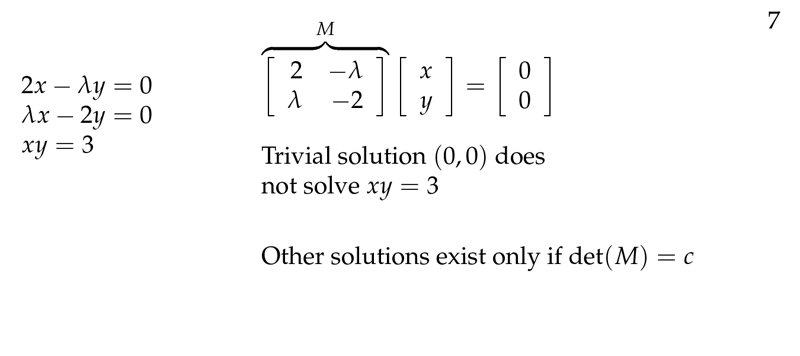
Figure 7: Solution of lagrante multiplier
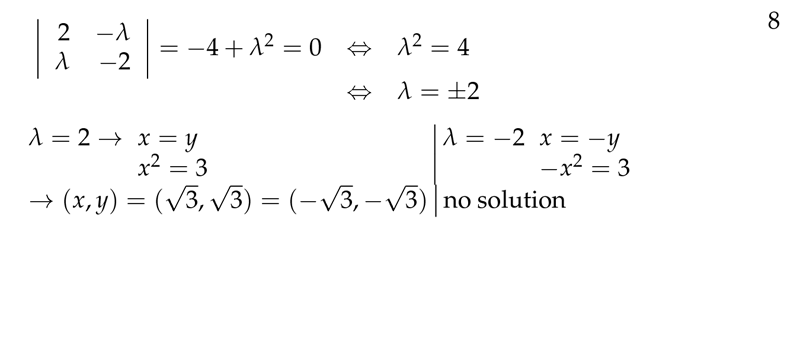
Figure 8: Values of \(x\) and \(y\)
2 Why are useful Lagrange multipliers?
2.1 Front
Why are useful Lagrange multipliers?
2.2 Back
They are used to solve constrained optimization problems. You have a function, \(f(x,y)\) for which you want to find the maximum and minimum values, but you don’t look all values of \(x,y\). Instead of that, you have another function that constraint \(x\) and \(y\) values. For example \(g(x,y) = c\), where \(c\) is a constant.
3 How are the Lagrange multipliers problem?
3.1 Front
How are the Lagrange multipliers problem?
3.2 Back
Minimize (or maximize) \(w = f(x,y,z)\) constrained by \(g(x,y,z) = c\)
4 How are the Lagrange multipliers solution?
4.1 Front
How are the Lagrange multipliers solution?
4.2 Back
Local minima (or maxima) must occur at a critical point. This point where \(\grad{f} = \lambda \grad{g}\) and \(g(x,y,z) = c\)
5 How are defined the critical point for a function constrained by a level curve?
5.1 Front
How are defined the critical point for a function constrained by a level curve?
\(w = f(x,y,z)\), constrained by \(g(x,y,z) = c\) (\(c\) constant)
5.2 Back
How are defined the critical point for a function constrained by a level curve?
By Lagrange multipliers
\(\grad{f}(x,y,z) = \lambda \grad{g}(x,y,z)\) and \(g(x,y,z) = c\)
6 Why on Lagrange multipliers both \(\grad\) are parallel?
6.1 Front
Why on Lagrange multipliers both $\grad$ are parallel?
\(\grad{f} = \lambda \grad{g}\)
6.2 Back
This is because of both level curves are tangent. If we get the directional differential on the direction on tangent vector, \({\displaystyle \dv{f}{s}\bigg|_{\vu{u}} = \dv{g}{s}\bigg|_{\vu{u}} = 0}\) (there is no change through level curve).
At the same point, the gradient are perpendicular to tangent vector (which is the same on both level curves)
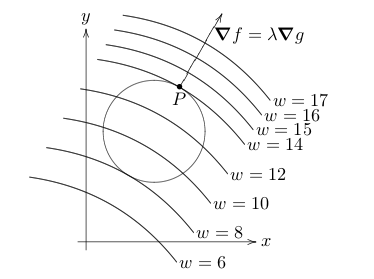
7 How many possible solution are there?
7.1 Front
How many possible solution are there?
- \(2x + 1 = \lambda 2x\)
- \(4y = \lambda 2y\)
- \(6z = \lambda 2z\)
- \(x^2 + y^2 + z^2 = 1\)
Only cases for solution
7.2 Back
- From 2nd eq: \(y=0\) or \(\lambda = 2\)
- From 3nd eq: \(z=0\) or \(\lambda = 3\)
There are 3 cases
- \(y=z=0\)
- \(\lambda = 3\) and \(y=0\)
- \(\lambda = 2\) and \(z=0\)
No boundaries for the sphere equations (not edges)
8 How can we find partial derivatives on non-independent variable functions?
8.1 Front
How can we find partial derivatives on non-independent variable functions?
\(g(x,y,z) = c\), then \(z = z(x,y)\). Find \(\pdv{z}{x}\) and \(\pdv{z}{y}\)
8.2 Back
- \(\dd{g} = g_x \dd{x} + g_y \dd{y} + g_z \dd{z} = 0\)
- \(\dd{z} = - \frac{g_x}{g_z} \dd{x} - \frac{g_y}{g_z} \dd{y}\)
- For \({\displaystyle \pdv{z}{x}}\)
- Set \(y\) as constant \(\implies \dd{y} = 0\)
- \({\displaystyle dz = - \frac{g_x}{g_z} \dd{x} \implies \pdv{z}{x} = - \frac{g_x}{g_z}}\)
- For \({\displaystyle \pdv{z}{y}}\)
- Set \(x\) as constant \(\implies \dd{x} = 0\)
- \({\displaystyle dz = - \frac{g_y}{g_z} \dd{y} \implies \pdv{z}{y} = - \frac{g_y}{g_z}}\)